Killing native wildlife, defined by the ecologically challenged as “varmints,” is a popular American tradition, especially when organized into social events in which guests compete for cash and prizes to determine who can dispatch the most and biggest.
“Varmints” targeted at wildlife killing contests include coyotes, bobcats, foxes, wolves, cougars, porcupines, skunks, crows, badgers, rabbits, beavers, raccoons, opossums, ringtails, and prairie dogs.
Equipment consists of folding chairs, high-powered rifles, tripods to stabilize the rifles, telescopic sights, night-vision gear, electronic calls, and plenty of the right ammo. There’s no “thrill of the chase” because there’s no chase.
One issue that fair-chase hunting and animal-welfare activists agree on is that wildlife killing contests need to be banned.
Speaking for animal-welfare activists is Animal Wellness Action president Wayne Pacelle: “[Wildlife Killing contests] are a particularly despicable form of animal cruelty masquerading as hunting. Contest hunts reduce hunting to mass killing purely for entertainment, with the participants and contestants doing their best to amass the largest body counts.”
And speaking for the fair-chase hunting activists is outdoor writer and avid big-game hunter David Stalling who, despite having plenty of hunter allies, makes this complaint about mute outfits representing fair-chase hunters: “Even groups I support and respect, including Backcountry Hunters & Anglers, the Theodore Roosevelt Conservation Partnership, and National Wildlife Federation are ignoring and avoiding this clear violation of science-based wildlife management and our North American Model of Wildlife Conservation they claim to uphold and defend — I can only assume as to not upset their membership base.”
The Boone and Crockett Club was founded on fair chase. By the late 1800s, market hunting — commercial harvest of wildlife for meat markets — had crashed populations of wild ungulates and waterfowl. But in 1918 fair-chase hunters Theodore Roosevelt, George Bird Grinnell, William Hornaday, Congressman John Lacey, and other members of the Boone and Crockett Club got market hunting banned.
As hideous as market hunting was, at least the wildlife didn’t go to waste. Victims of wildlife killing contests are left to rot.
What’s more, wounded and dead victims are impregnated with lead-bullet fragments that poison, sometimes fatally, at least 130 predator and scavenger species including eagles, hawks, vultures, and even killing-contest targets that elude the rifle barrage like foxes, coyotes, wolves, badgers, bobcats, ringtails, and raccoons.
Copper bullets are a non-toxic alternative. They were developed by ammo companies not to save wildlife from lead poisoning but because they kill more effectively.

I polled the most experienced big-game hunters I know about copper bullets: Bruce Farling, former director of Montana Trout Unlimited, replied: “It’s been at least a dozen years now since I switched to copper, and I can confirm that it’s superior ballistically to lead. In terms of effectiveness, especially on elk, I have found copper has superior stopping power, even using lighter loads.” And from four celebrated journalists who serve with me on the Circle of Chiefs of the Outdoor Writers Association of America: Jim Low, “Highly accurate, sturdy, excellent expansion and weight retention.” Matt Miller, “I’ve found copper superior in every way.” Scott Stouder, “Nothing but stellar performance.” Larry Stone, “Accurate, hard-hitting.”
But copper bullets are marginally more expensive (for premium big-game loads, something like $2.25 more per box of 20). So wildlife-killing contestants insist on using lead. The lead-core “Varmageddon bullet” is a favorite. According to the manufacturer, Nosler Inc., it delivers “high velocities and exceptional terminal performance on varmints at all practical ranges.”
In addition to cash, wildlife-killing-contest prizes have offered door prizes like hunting paraphernalia, AR-15 assault rifles, and coyote urine.
Organizers of the West Texas Big Bobcat Contest effuse as follows: “For the 3 contests combined in 2024, we had a total of 1,836 teams entered, paid out $421,280 in prize money, gave away some pretty awesome prizes from our sponsors, and we had a heck of a good time doing it. That brings our all-time total payout (since 2008) to $3,961,020. That brings our all-time total payout (since 2008) to $3,961,020.”
Crack. A prairie dog exploded in red mist, its hindquarters cartwheeling into the air. 'Dead,' shouted Mr. Dog. Two babies stood beside a burrow, one with its paws on its sibling’s shoulders. Crack. Both exploded in red mist. 'Can ya hear it go plop?' he yelled. Crack, crack, crack, crack … Dozens of other prairie dogs exploded or dragged themselves into their burrows, minus body parts. 'I done something to him,' shouted Mr. Dog.
Prairie dogs are a keystone species. Pull out the keystone in the arch, and the whole ecosystem tumbles down around your feet. At least 150 species depend on prairie dogs. For example, critically endangered black-footed ferrets prey on prairie dogs and use their tunnels. Black-footed ferrets can’t survive outside large, healthy prairie dog towns.
Some wildlife-killing contestants, especially those who target prairie dogs , belong to the “Red Mist Society,” so named because targets explode in red mist when hit by high-powered rifle rounds. Red mist provides participants with a high they call “IG” — instant gratification.

Rich Grable, better known as Mr. Dog, is a legend in wildlife-killing-contest circles. He earned his nickname by killing 452 prairie dogs in a day, 8,635 in a year.
On a morning Mr. Dog planned to compete only with himself, he invited me to observe his prowess on the Rosebud Sioux Reservation in South Dakota. Every time he blew up a prairie dog he punched his dashboard-mounted kill counter with his thumb. He never got out of his truck. His weapon of choice was a Remington .222 that he rested on a styrofoam pad on the edge of the window.
Crack. A prairie dog exploded in red mist, its hindquarters cartwheeling into the air. “Dead,” shouted Mr. Dog. Two babies stood beside a burrow, one with its paws on its sibling’s shoulders. Crack. Both exploded in red mist. “Can ya hear it go plop?” he yelled. Crack, crack, crack, crack … Dozens of other prairie dogs exploded or dragged themselves into their burrows, minus body parts. “I done something to him,” shouted Mr. Dog. “I done something to him, too.” I smelled the styrofoam pad melting under the barrel heat.
Participating in and acquiring lessons from the February 2024 Southwest Texas Youth Varmint Hunt were 119 children. They were given prizes for knocking off coyotes, bobcats, foxes, raccoons, and rabbits.
Then there’s the Albemarle, North Carolina Coyote Classic, Central Texas Varmint Extreme, Sonora, Texas Sergeant R Varmint Hunting Competition, Cresco, Pennsylvania Annual Coyote Contest, Limestone County, Texas Predator Hunt, Teague, Texas FFA Varmint Hunt, Athens, Texas Conway Farms 2024 Predator Hunt, and Cambridge, Ohio Deerassic Park Coyote Tournament, to mention just a few.
Wildlife-killing-contest promoters claim their events provide valuable public services by removing predators, thereby saving livestock and game species. The way to save livestock from predators is to fence it in and/or protect it with guard dogs. Killing predators to protect free-ranging livestock is like bailing a boat with no bottom.
The health of game species depends on natural predation. Wildlife-killing-contest websites and predator-killing forums are rife with vain attempts to legitimize this wanton waste. “Save a fawn. Shoot a coyote,” is their shibboleth.

And from Bass Pro Shops: “Predator hunting contests can be beneficial by training new hunters, protecting the local wildlife by taking out coyotes, bobcats, raccoons, and other predators.”
Nature doesn’t work that way. The fantasy that game can be improved or permanently increased by eliminating predators is as old and discredited as alchemy. As the Inuits declare, “The wolf makes the caribou strong.” The same realization dawned on Aldo Leopold later in life when he denounced his early 20th-century work as a federal predator-control agent. This predator killer turned ecologist is today recognized as the father of wildlife management. In his essay “Thinking Like a Mountain,” Leopold reported the devastation deer do to wildlife habitat, including their own, when humans remove wolves.
I’m fine with hunting for food, but these wildlife killing contests are wanton waste, not hunting… At a time when so much of our wildlife is in peril, I think we should look at these animals differently and understand that they have families, feelings, and relationships. Let’s honor them by celebrating their lives instead of their deaths.
Persecution of wolves and cougars in the East has resulted in gross overpopulation of malnourished, stunted, and diseased white-tailed deer. Other results include deer-vehicle crashes that annually kill some 200 Americans and injure at least 10,000 others, an epidemic of human, dog, and wildlife diseases spread by deer ticks, loss of native wildflowers, and elimination of birds, mammals, reptiles, and amphibians that depend on forest understories.
Dr. Robert Crabtree is the nation’s leading researcher on coyotes (the species most targeted by wildlife killing contests). He found that virtually all coyote “control” results in more, not fewer, coyotes. Reduction is possible only if 70 percent of a population is killed, something Crabtree notes “rarely if ever” happens. In populations unmolested by humans the average litter size at birth is five or six. But competition in summer reduces pup survival to 1.5 to 2.5. So when humans kill coyotes, reduced competition results in higher survival.
There’s progress. Americans are beginning to grasp the fact that if the whole of nature is good, no part can be bad.
While wildlife killing contests are still legal in most states, condemnation by environmental and animal-welfare groups, biologists, fair-chase hunters, legislators, and mainstream media is starting to limit them. On December 22, 2023 New York State outlawed wildlife killing contests. Other states that have banned or restricted wildlife killing contests are Arizona, California, Colorado, Massachusetts, Maryland, New Mexico, Vermont, and Washington. And on May 22 legislation was introduced in the U.S. House of Representatives to prohibit wildlife killing contests on 500 million acres of U.S. public lands.

Among the more effective (and humorous) condemnations of wildlife killing contests is a popular song composed by folk singer and former Wyoming resident Tom Rush. In the introduction he offers at concerts, he claims to have found the song on the jukebox while lunching at the “Squat and Gobble” and that he then had to look up the word “paean” — “a song of praise or exaltation,” pronounced “peeing.” Here’s his song: “A Cowboy’s Paean to a Coyote.”
And from Melissa Groo, an internationally celebrated wildlife photographer and advisor to the National Audubon Society: “I’m fine with hunting for food, but these wildlife killing contests are wanton waste, not hunting… At a time when so much of our wildlife is in peril, I think we should look at these animals differently and understand that they have families, feelings, and relationships. Let’s honor them by celebrating their lives instead of their deaths.”
Nature doesn’t require human oversight. She knew what she was doing when she equipped critters with natural predators.
Why do state game and fish agencies permit and excuse wildlife killing contests? Why aren’t their information-and-education officers teaching lessons learned by the Inuits, Leopold, Crabtree, and thousands of other scientists, including those the agencies employ?

The answer is that wildlife-killing contestants must buy state hunting licenses. When I was a game and fish agency bureaucrat in the 1970s I learned that because I and my colleagues were fed and clothed by license buyers, “information and education” meant telling sportsmen what they wanted to hear rather than what they needed to know. Instead of defending their long-term best interests, we indulged their short-term appetites like allowing them to compete to see who could blow away the most and biggest coyotes. So except for the few state game and fish agencies financed mostly by tax dollars, curricula resemble that of schools at which students write teachers’ paychecks.
The same state bureaucrats who permit and excuse wildlife killing contests simultaneously gush about “The North American Model of Wildlife Conservation” which operates partly on these principles: “Wildlife is held in trust for all citizens,” and “wildlife may only be killed for a legitimate, non-frivolous purpose.”
Wildlife killing contests fling down and dance upon that model.
















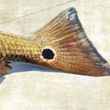
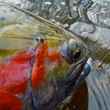




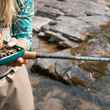



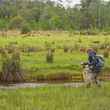
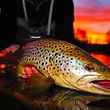
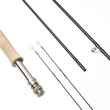

Comments
Jom replied on Permalink
With all due respect, I joined your email to read informative articles on fly fishing. I didn't expect to be lectured on political issues. Stick to what you know. I m unsubscribing, but wish you well.
Ted Williams replied on Permalink
Sorry to see you go. But I'm confused. Please explain why and how you imagine that accurate reporting on wildlife killing contests is a "political issue." We didn't hear from you about shark killing contests (my previous piece). Is shark killing a "political issue," too?
iKnowMoreThanYou replied on Permalink
There's a lot of bunk in this article. An opinion piece, at best, written by a person who thinks with their emotions and lacks logic or reasoning. Your research was enough to scratch the surface and help make you wildly incorrect.
Tim Driscoll replied on Permalink
Agreed as above, you guys really stepped on this one poorly, stick to Trout…
As if the antis are not going to just move on to the next thing to ban, including catch and release fly fishing as you’re being ,” mean to the poor little trout”.( think it through, in the end, you’re enjoying a natural experience, at the expense of a wild creature)( come on, think harder, even catch and release fishing comes with a 2-8% incidental death rate depending upon angler educations and water temperatures)
Yep, fly fishing’s dirty little secret……
I’m an attorney and good friends w the lead attorney in my Home State. Specifically she heads the animal welfare committee in our State Legislature. Anyway and candidly, they’re still trying to outlaw predator killing contests,(thankfully they haven’t succeeded as the definitions required w likely outlaw field trialing dog events w live birds and many types of social group hunts like dove hunting) once they move and succeed w the predator contests, they’re moving to trapping…..
Are you so sure your beloved fly fishing for trout isn’t next?
JOSEPH R KNAPP II replied on Permalink
When did you become PETA
Glenn Dotter replied on Permalink
I agree with the 4 previous commentors. Clearly written by an anti hunter. The writer rambles around from contests to bullets, to personal attacks. Clearly a liberal. Colorado liberals have reintroduced wolves which have already killed cattle and sheep. Now the are trying to stop mountain lion hunting at the same time they complain about lions in Boulder. Prairie dog hunts control population and check plague which is common anoung prarie dogs. Liberals want to force their opinion on the rest of us.
Ted Williams replied on Permalink
I’m an avid, lifelong hunter. Wildlife killing contests aren’t hunting. And please tell us how prairie dogs managed to survive and thrive for eons before people like Mr. Dog arrived with .222s to blow them away for their own good.
Glenn Dotter replied on Permalink
Ted, you are entitled to your opinon. The contests you write about are not hunting. They are shooting contests on live targets. Whether you agree with them or not is irrelevant. America is still a free country. Whether I agree or not is also irrelevent also. Judge not lest you be judged. Yet you liberals judge continuously and tell the rest of us how we should live.As I said you are entiteled to your opinion. But you dont have the right to dictat your opinion oneveryone else.
Richard K. Sanders replied on Permalink
You're right Ted and I think as you do. Hunters and anglers with integrity and respect for the precious gift of wild country don't countenance this deplorable activity, or the people who do.
Brownboy replied on Permalink
Thank you Mr Williams for another fine article raising our awareness about the damage we often do to this old world and its creatures in the pursuit of our happiness. I have always gone out of my way to read your work, knowing it will either reinforce or challenge my beliefs - but also knowing it will highlight an important issue worthy of thought.
The outdoorsmen I have most admired, even from a young age, were those who wanted to minimize the suffering they inflicted in the enjoyment of hunting and fishing. I know this has been and remains important to me, a responsibility I readily accept as a condition of my freedoms.
I don’t think this is a partisan concern. I’m sure there are a world of conservative hunters and anglers out there who would take issue with the idea that caring about damage and suffering identifies one as a liberal.
Frank replied on Permalink
Great article, made me nauseous reading about these fools slaughtering for sport, and yes, I’m a hunter & fly guide. Keep articles like this coming, shining a light on cockroaches tends to scatter them.
Eric replied on Permalink
Not sure why an article of this nature is on here first of all, and secondly this is another example of anti-hunters playing on the emotions of the populace rather than trusting the scientists who set bag limits and issue tags/permits for take. Unfortunately it's a tactic that works incredibly well and hence these anti-hunters go back to that well often. (The OP can save their 'But I AM a hunter' comment in reply.) Propaganda of this nature hurts all hunters regardless of method of take or quarry unfortunately for us all. Has flyfishing become so decoupled from an experience in nature and so much about becoming the next 'influencer' that the Hatch editorial team thought running this screed was a good idea? The flyfishing and hunting populations are now so divorced from each other? How strange.
Edward Williams replied on Permalink
Who’s an “anti-hunter”? I’m a lifelong hunter, and reporting on wildlife killing contests isn’t reporting on hunting. Hunting is an entirely different pursuit than sitting on one’s butt and blowing away native wildlife for money and prizes, then letting it rot. That’s why members of the ethical, fair-chase “hunting population” -- whose reputations are trashed by wildlife killing contests -- revile them.
steve replied on Permalink
Hunting or fishing contests are nothing more than entertainment for the slob sportsman No wonder I have mostly always hunted or fished alone. Wont associate with these neanderthals..
Pages